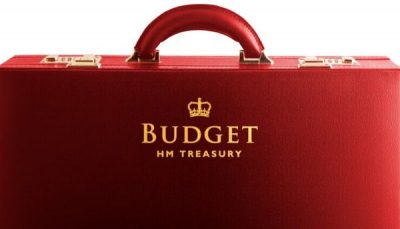The Government is intending to increase the protection of taxpayers’ interests during insolvency proceedings and also to introduce legislation that will crackdown on tax avoidance where there is a risk that the company may deliberately enter insolvency.
Could this mean other creditors lose out and will the changes work in practice?
A briefing paper issued by HM Treasury, to coincide with comments made during the Chancellor’s speech in the Autumn Budget, has outlined new measures to protect taxpayers’ interests in insolvency. From 6 April 2020, when a business enters insolvency, any taxes paid in good faith by its employees and customers, and temporarily held in trust by the business, will go to fund public services rather than being distributed among the other creditors. Only taxes collected and held by businesses on behalf of other taxpayers, such as VAT, PAYE Income Tax, employee NICs and Construction Industry Scheme deductions, will be treated in this way.
The timing of the announcement has surprised many insolvency practitioners. HMRC issued a discussion paper, ‘Tax Abuse and Insolvency’, in April 2018, which did not raise these issues.
Prior to 2002, HMRC enjoyed preferential status for PAYE/NI (12 months) and VAT (6 months) debts when a business entered insolvency, but this changed under the Enterprise Act 2002, with effect from 15 September 2003. Since then, such debts have been classed as unsecured claims in insolvencies, meaning that HMRC is treated the same as other types of creditor.
In the event of a business insolvency, invariably creditors do not expect to be paid in full. The new measure is therefore an attempt to redirect some of the available funds to HMRC, by ensuring it is ranked higher when it comes to prioritising the repayment of debts. Creditors are ranked as follows:
- Fixed charge creditors
- Preferential creditors
- Floating charge creditors
- Unsecured creditors
From April 2020, HMRC will move from being unsecured creditors (4th on the list) to being preferential creditors (2nd on the list). Despite still ranking below fixed charge creditors and other preferential creditors, this means HMRC will have a greater prospect of recovering some or all of any unpaid taxes.
The fact that HMRC is moving up the rankings means that others will inevitably lose out, as there will be less money available to other creditors. Lenders such as High Street banks, which rely on a ‘floating charge’, and unsecured creditors such as trade suppliers, are among those that could be impacted.
In its briefing paper, HMRC states that “it does not expect [the changes] to have a material impact on lending. However, with lenders now facing a greater risk of not getting their money back, they will inevitably become tighter in their decision-making. While they will consider their position on a case-by-case basis, this increased level of risk may manifest itself in a change to borrowing terms, increases in the cost of borrowing, and increased difficulty in securing borrowing. Employee-intensive businesses, with high PAYE/Employee NI liabilities are particularly likely to face challenges. We could also see lenders further seeking to tighten control of assets, with the aim of qualifying as ‘fixed charge’ rather than ‘floating-charge’ creditors.
Other legislative changes due to be implemented as part of the Finance Bill 2019-20, aim to prevent tax avoidance where a business may deliberately enter insolvency. While the majority of businesses become insolvent due to factors outside of directors’ control, a small number may look to enter insolvency deliberately with the intention of discarding debt. For example, ‘phoenixism’ is the process of conducting the same business or trade through a number of companies. Each time a company enters insolvency, the business is transferred to the new ‘phoenix’ company and certain debts are left behind. Often, a large proportion of the debt left behind is owed to HMRC. By making company directors personally liable for any outstanding debts and preventing them from hiding behind a company’s limited liability, it should no longer be possible to avoid paying unpaid taxes in this way.
These changes will force directors to do what they can to repay their debts in insolvency situations at the same time as providing a strong deterrent to those who deliberately choose to build up large debts to HMRC. Directors should be aware that Time to Pay arrangements, which allow struggling businesses to repay balances to HMRC over a longer period, will remain available to viable organisations facing insolvency due to factors outside of their control, such as temporary cash-flow problems.
Without any draft legislation yet, it is difficult to gauge the full impact of these changes on the insolvency process. However, it is important to plan ahead and businesses experiencing financial difficulties should seek advice sooner rather than later. Doing so, could help them to stay on the right side of the law and help their directors avoid being found personally liable for any unpaid taxes if the business takes a turn for the worse.
Laurence Pagden is an insolvency partner at accountancy firm, Menzies LLP. The firm was named Corporate Restructuring Firm of the Year at the 2018 Turnaround, Restructuring and Insolvency (TRI) Awards.
